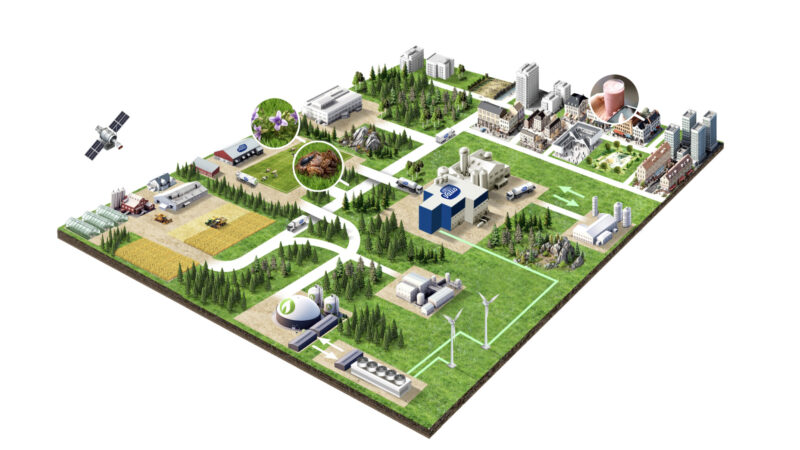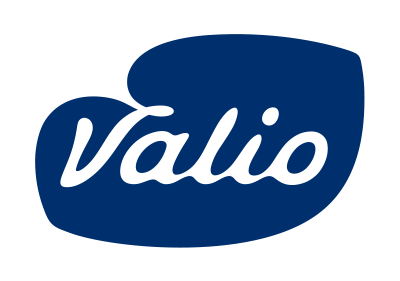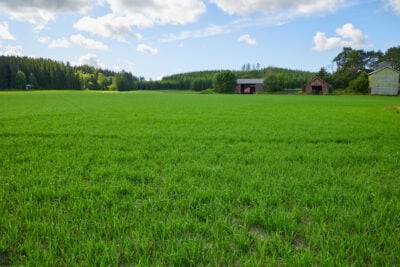Valio Food 2.0 Research Theme: Circular Economy and Resource Efficiency

Circular economy and resource efficiency are crucial for future food systems. They help reduce reliance on virgin materials, cut environmental impact, and strengthen local production. In this article, theme leader Ehsan Fathi reflects on the question of how agriculture could become more resource-smart?
“I’m deeply interested in advancing circular solutions and resource efficiency in the food industry to help tackle key societal challenges such as climate change, food insecurity, and resource scarcity. I’m motivated to contribute to this transition by driving innovations that reduce waste, optimize resource use, and create sustainable food systems that support both industry efficiency and healthier communities,” Ehsan Fathi says.
Ehsan Fathi works as a Project Manager in Valio’s Sustainable Business Development team. He has spent the past 10 years in circular economy sector and hold a PhD in Environmental Engineering. A significant part of Ehsan’s work focuses on creating new circular solutions across Valio’s value chain including biogas production and carbon capture.
Rethinking Resources and Nutrient Flows
Current nutrient cycles in agriculture are inefficient and reliant on external inputs.
“Agriculture relies heavily on virgin nutrients. These are materials extracted directly from the finite resources in the ground and not previously recycled. Phosphorus and potassium are mined, and although nitrogen itself is obtained from the air, the hydrogen needed in the process is derived from natural gas, causing CO₂ emissions and linking production to geopolitically unstable raw materials,” Fathi explains.
Phosphorus recycling remains especially limited. Although some nutrients return to the food system through manure or sewage sludge, much of it ends up in rivers and lakes or goes to waste. This maintains dependency on finite virgin phosphorus resources, which are projected to run out within 50–100 years.
The solution lies in a more holistic circular approach. By integrating renewable energy production, nutrient recovery, and smart technologies, agricultural resource use can become more self-sufficient and sustainable.
Four Focus Areas Driving Circular Innovation
The work done within the theme of circular economy and resource efficiency focuses on four interconnected areas:
- Nutrient cycling and renewable fertilizers
- Carbon capture and biogas production
- Energy and water efficiency on farms and in production
- Material efficiency and side-stream valorization.
Within these areas, a variety of practical projects are being carried out, with a few examples presented below.
Nutrient cycling and renewable fertilizers investigate domestically produced, renewable nitrogen fertilizers such as green urea. Funding is currently being sought from Business Finland.
“The aim is to assess how environmentally friendly alternative nitrogen fertilizers perform in Finnish agricultural conditions, focusing on crop yield, cost efficiency, and emissions,” Fathi says.
Within carbon capture and biogas production, the Bio2Max project focuses on capturing, utilizing, and storing carbon dioxide. Complementing this, the BioCycle initiative develops circular bioeconomy solutions, such as recovering CO₂ from biogas plants and Valio’s production facilities.
Biogas production offers two key benefits: it generates renewable energy and converts the nitrogen in manure into a plant-available form. The process also produces digestate, which is a byproduct rich in valuable nutrients such as nitrogen, phosphorus, and potassium.
Captured CO₂, particularly from biogas plants, can be reused in food production, greenhouse cultivation, or converted into synthetic fuels.
“We’re also looking into green ammonia, which is produced from green hydrogen through electrolysis. This process uses renewable electricity to split water into hydrogen and oxygen. This opens the possibility of producing nitrogen fertilizers without fossil natural gas,” Fathi says.
Work done insmart energy and water use seeks to improve energy and water efficiency across the value chain in agriculture.
“We assess new technologies for wastewater treatment. For example, algae are being studied for their potential in wastewater nutrient recovery and utilization. We also explore how Valio products can be produced with less water use, such as through more efficient filtration techniques,” Fathi says.
Valio is also piloting climate-friendly farming practices through its own Food 2.0 climate initiative. The goal is to reach the first four carbon-neutral dairy farms within the next four years. One initiative is using satellite data to optimize fertilization and identifying nutrient deficiencies that hinder crop growth.
The fourth area focuses on material efficiency and side stream valorization. In a grass biorefinery project Valio is developing a concept for optimally realizing the potential of grass in food systems. Grass can be separated into fiber fractions and proteins. Fibers can then be used in textiles or other fiber applications, while the protein could also be further purified and used for food and feed.
Plastic waste in farms is one underutilized side stream. Different utilization options, such as in chemical recycling, will be examined. One source of plastic waste in farms is silage grass wrappings used for storage, which are often dirty and challenging for mechanical recycling methods.
“At Valio, we have a wide value chain and an innovative culture. I find it inspiring to work with open-minded peers on a broad range of topics, creating meaningful impact,” Fathi concludes with a smile.
Food 2.0 Research themes

Food 2.0
Food 2.0 is extensive research, development and innovation project, aiming to create a Finnish nature-smart food system in which growth, profitability and added value are built on the basis of sustainable production.



